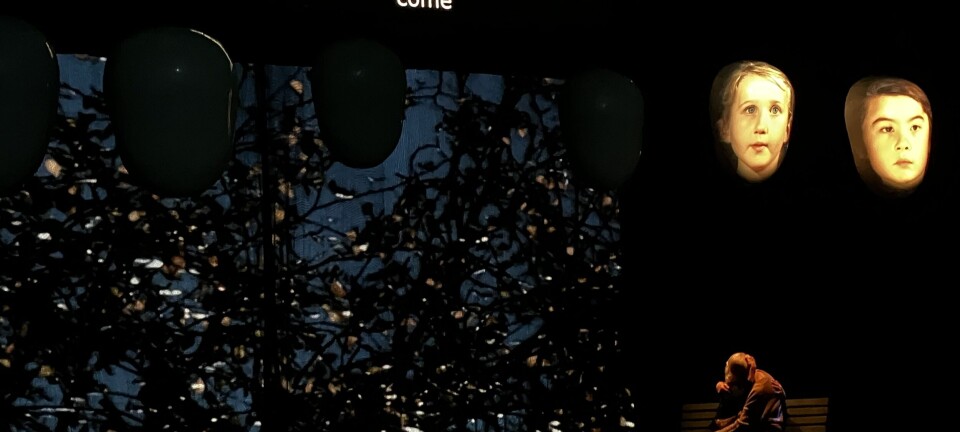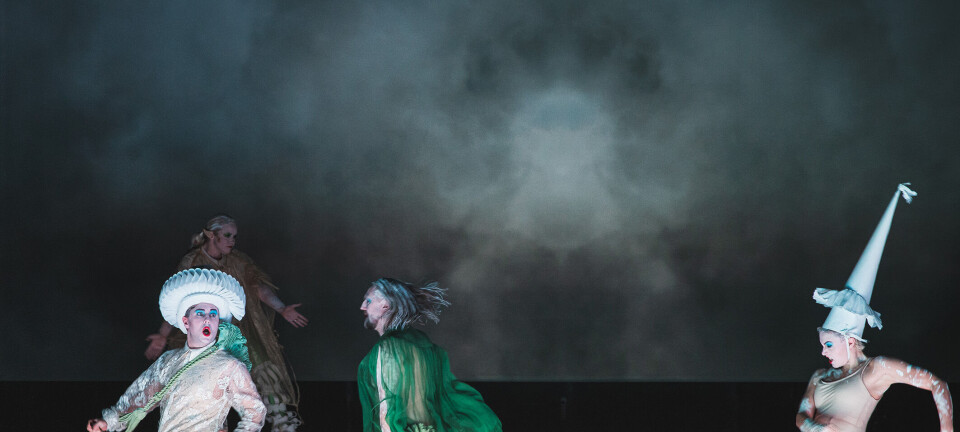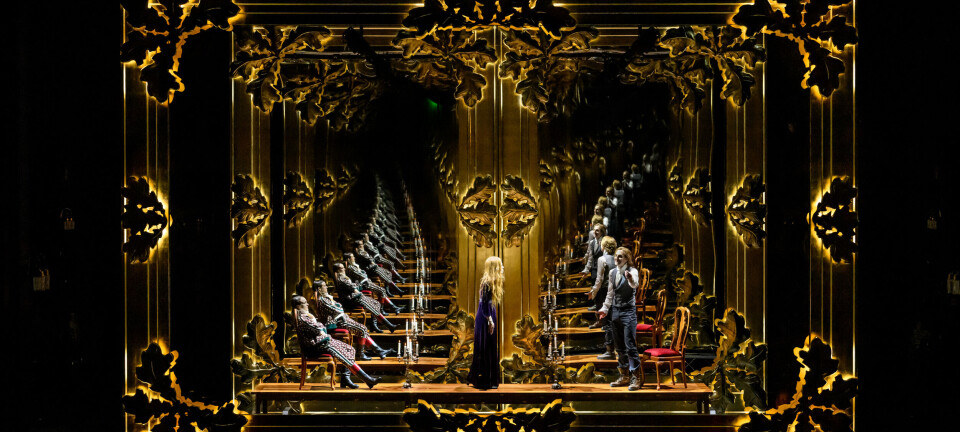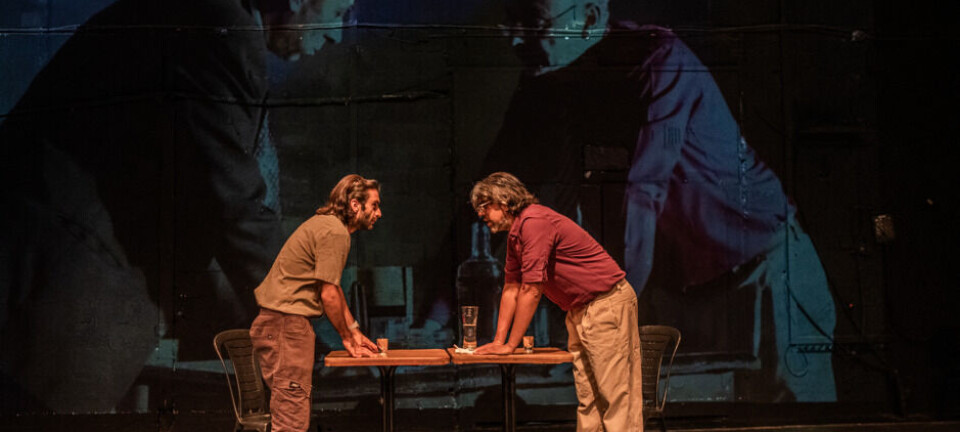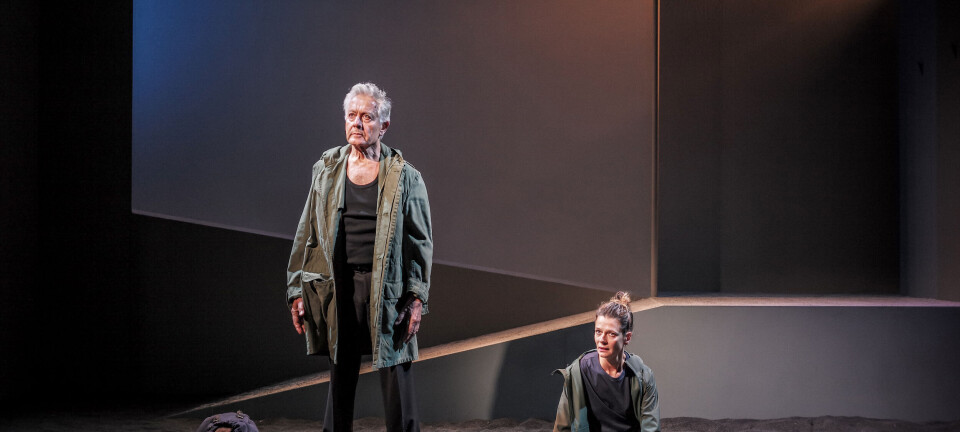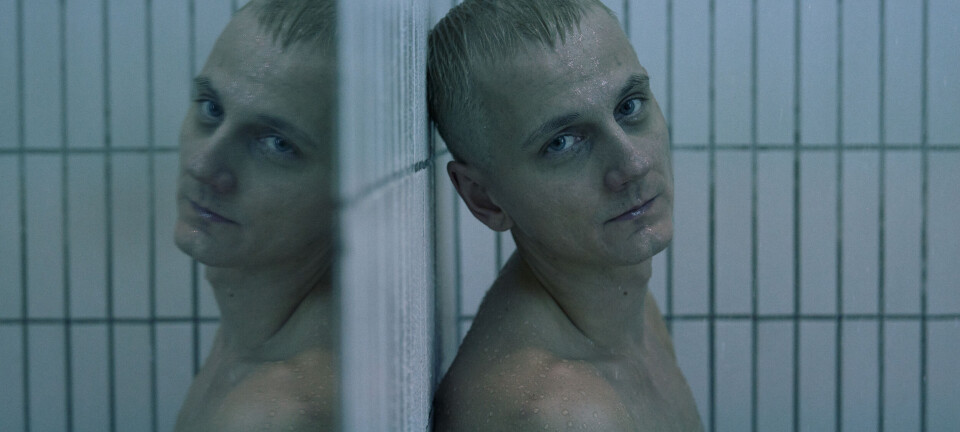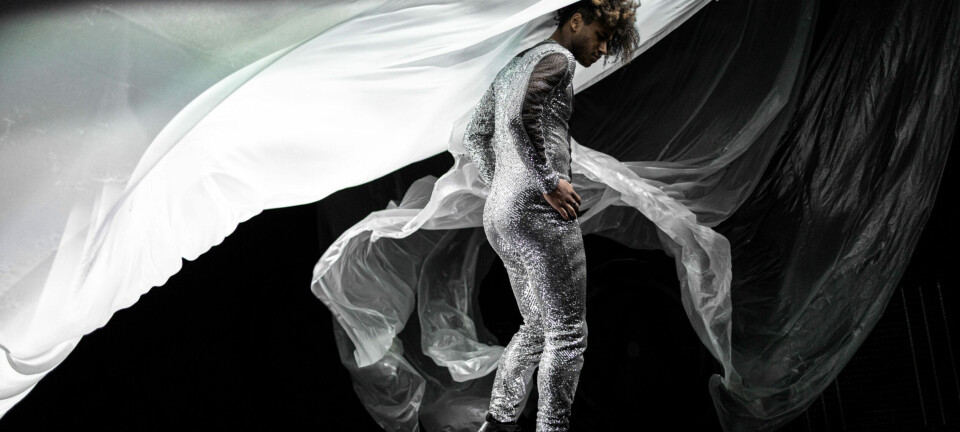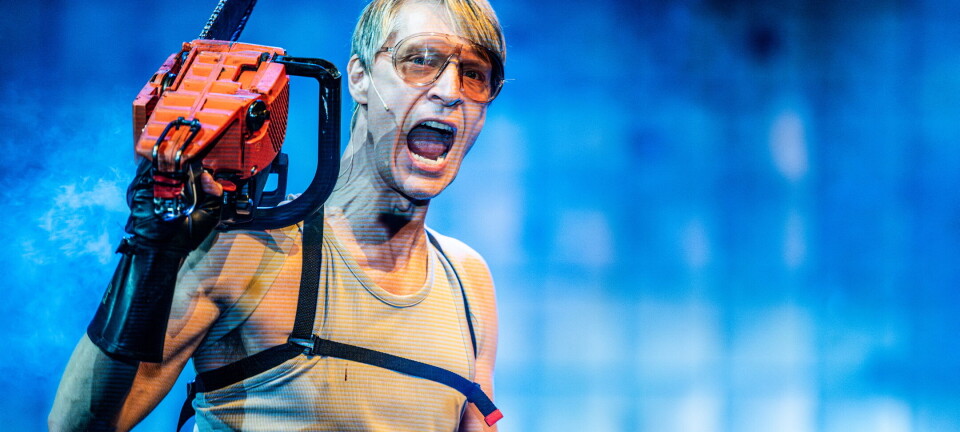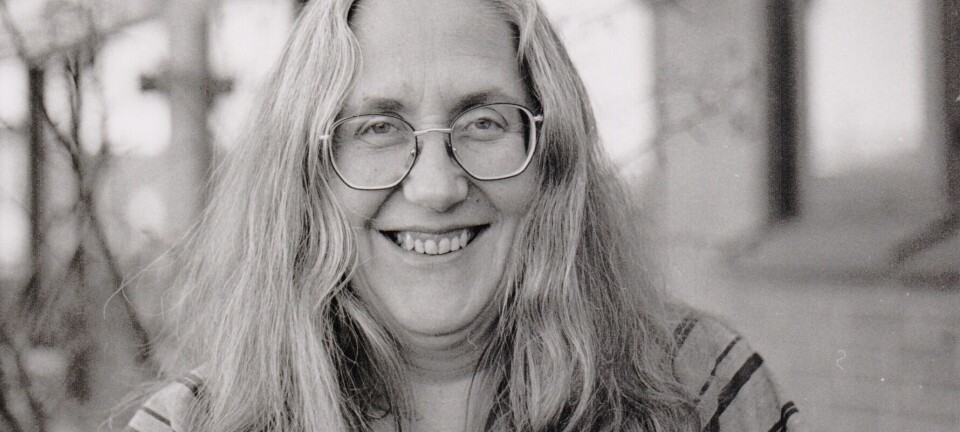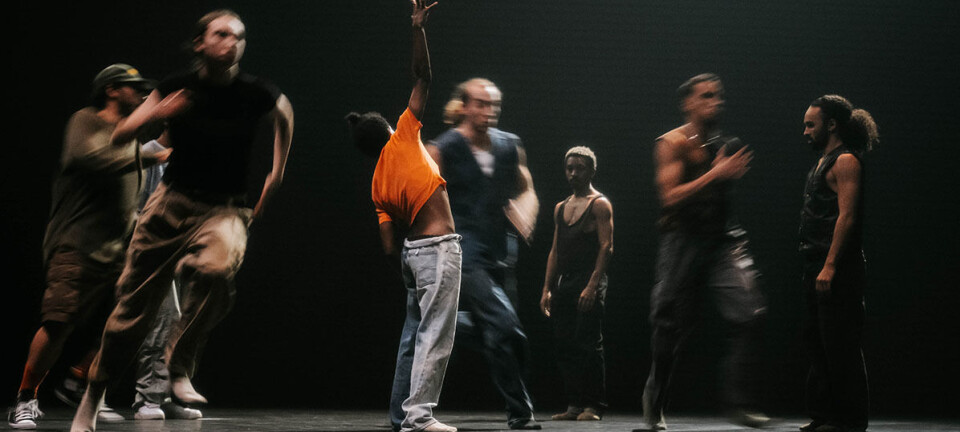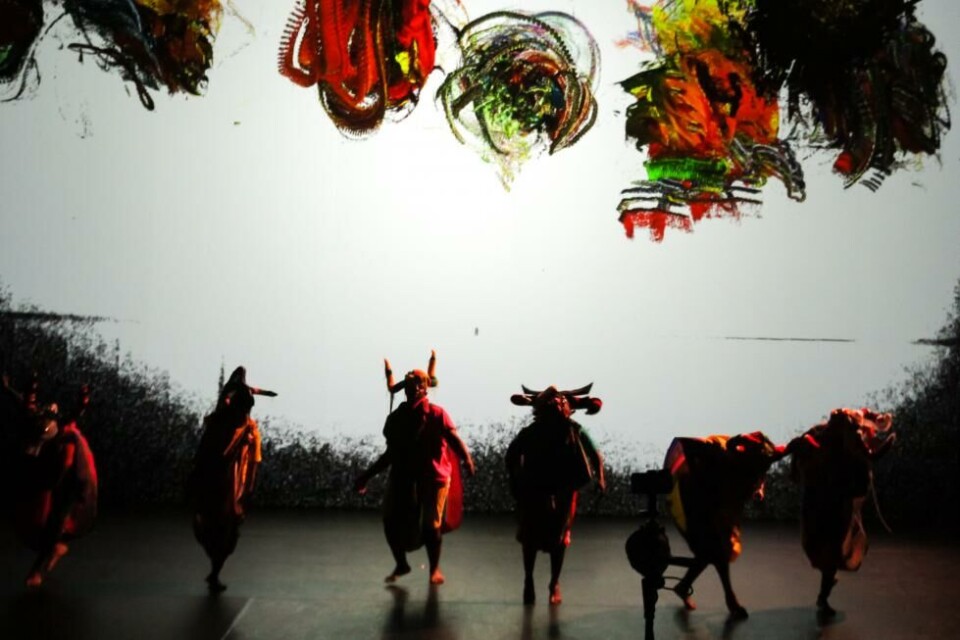
Same old struggle
«We wear our wheels with pride and slap your streets with color … we said ‘bonjour’ to satan in 1820 …» invites its audience into a giant rickshaw and gives us a ride straight to present-day South Africa’s reality.
The sound of a creaking floor. Emerging from the back corner of the stage, a group of performers dressed in bright
colourful clothes sneaks towards the audience. The lights go on, but the technician gets it wrong. They are calling the technician’s name. They tease him, it’s a game: ‘Black out! No, lights on! No, lights off! Can we get the lights again, please?’ They explain they need to get the atmosphere right.
Last weekend, Dansens Hus presented We wear our wheels with pride and slap your streets with color … we said ‘bonjour’ to satan in 1820 … The long ‘dada-style’ title is one of the trademarks of the South African choreographer Robyn Orlin who has built a consistent body of work since the 80’s. For this production Orlin has worked together with six dancers from Moving into Dance Mophatong (MIDM), a Johannesburg based contemporary dance company that blends traditional Zulu dance with more contemporary influences. The music was composed in direct dialogue with the choreography and encompasses the work of the composer Yogin Sullaphen and vocalist Anelisa Stuurman, also known as the music duo uKhoiKhoi.
We wear our wheels… could be described as a participatory multi-media ritual in which the audience is invited to collectively honour the historical figure of the Zulu rickshaw pullers from Durban. During Apartheid and despite the rising popularity of the bike, these rickshaw workers continued to transport white people by, literally, running their oppressors around the city in a cart on wheels. Institutional racism in the form of transport: it’s an ugly image. What makes the Durban rickshaws, however, stand out from human-powered transport modes elsewhere in the world (I am thinking of the rickshaws in places like Japan and China) is that these men would wear colourful costumes and impressively high, often horn-like ornaments on their heads. This extraordinary dress up (the term ‘anti-camouflage’ is mentioned in Dansens Hus’ podcast) would transform them into magical looking creatures – ‘flying angels’ as Orlin remembers from her childhood.
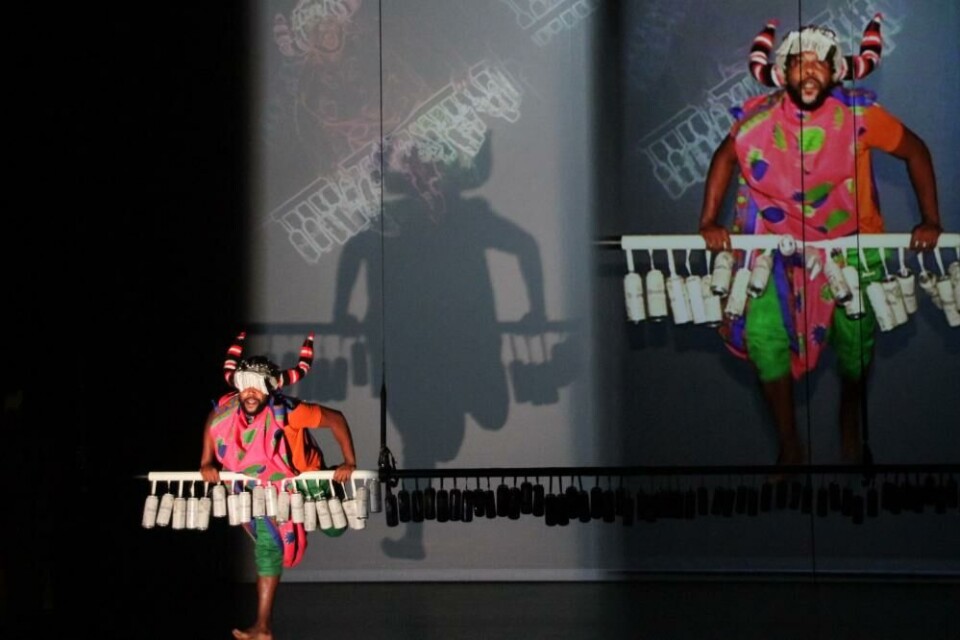
Forth and back
With We wear our wheels with pride… Orlin turns the theatre into a giant rickshaw. The music from the music duo uKhoiKhoi, defined as ‘Afro-futuristic sound’, vibrates through the theatre space. Traditional instruments meet new technologies, while the vocal spectrum ranges from opera, chanting, to rhythmical poetry. A similar fusion we see with the dancers from Moving into Dance Mophatong (MIDM) who seem to combine traditional dance and movement patterns with elements such as floor work, acrobatics and street dance.
After a concert-like encouragement to ‘hum in’ our ancestors, a rig with colour-arranged soda bottles and animal-shaped headdresses descends from the ceiling. Next thing we know, the audience is invited to take a ride while following the repeated instruction: «Go forth and back!». Gradually, we watch how the dancers begin to embody the rickshaw figure. Bodies are falling to the ground and the movements are less controlled. Through the music we hear the sound of horses. Anelisa Stuurman, the vocalist, is roaming around while using her braid as a whip. It is playful, but also dark.
Throughout the whole performance, live-video is being used to create an array of psychedelic effects. The extensive use of video-technology, which often shows enlarged patterns of African fabrics borders the gimmicky. Yet I appreciated how eventually each dancer takes off their headdresses and uses the projection to give us a closer look at what they are made of: buttons, wool threads, leather strings, a pair of flashy sunglasses. It is a relief to see that they are not ‘originals’. In fact, it’s something that Orlin stresses during the after talk: ‘it’s a self-invented ritual, we do not appropriate any traditions’.
‘Badass’
Just after the performance I try to reconstruct the end of We wear our wheels with pride…: A vintage-looking video of a rickshaw in the shape of a polaroid. A sentence next to it saying that no rickshaw lived longer than 35 years. Was there music at that point? What were the performers doing? Were we still moving along?
Despite having enjoyed the performance, I feel the ambiguity of it for days after. When I was asked to write this review, my immediate reaction was: I am not the right person. White gaze, white guilt, white fragility: you name it. But when I discovered that Orlin is a white Jewish South African who had been making work since the 80’s, I was somehow intrigued. I wondered if she sometimes felt the same way, the feeling of not being the right person to speak up. I wondered if that feeling had changed over the last couple of years. As a way of preparing this review, I came across a recent video in which the American choreographer and art director Bill T. Jones interviews Orlin about her upcoming show in New York. The entire conversation has a tough undertone, almost as if Orlin is in some kind of job interview. Eventually it becomes clear that Jones wants Orlin to answer a question his audience might ask, namely why he would support a white artist who uses black culture as a point of departure for her work. I am taken aback by her insistent answers: «Why can’t I talk? Nobody owns history. I’m deeply hurt. I am deeply moved. There are things I need to say about it. Why shouldn’t I have a say? My voice is important». Jones, who is black, concludes confoundingly, half stating, half asking: «You are a ‘badass’».
Between R30 and R100
The freedom to say and do what you want …There is one moment that keeps on coming to my mind. A performer approaches the camera, his face in close-up on the big screen saying something about no longer being a rickshaw now, but an Uber driver. Then showing with his hands, the money gesture: ‘Same old, same old, struggle’, he says.
Arriving home, I type ‘rickshaw Durban’ in my browser. One of the first results is a tourist page. I learn that there are actually still rickshaws in Durban: ‘sadly only 20’, the text says. There are phrases such as ‘unique attraction’ and ‘enthusiasm for their trade’ and that you can expect to pay between R30 and R100 (about 15 to 50 NOK) for a 15 to 20 minute ride. Then: ‘Sit back and relax as your rickshaw puller trots along, seemingly effortlessly pulling his load behind him.’ On another page, I also learn that during the Covid-19 restrictions, rickshaw pullers never received the promised support from the government and that many are fearing their businesses will have to close. When Orlin in the after talk mentions that she would love to perform We wear our wheels with pride in South Africa, especially Durban, I hear – listening from mye Norwegian seat – that: ‘sadly, South Africa can’t afford it.’
Reference:
https://www.youtube.com/watch?veBORVPq3raU
(Published 20th of Marc 20023)

